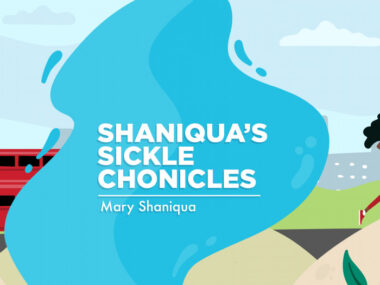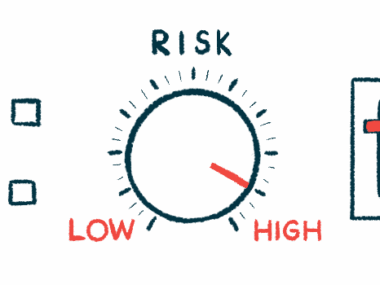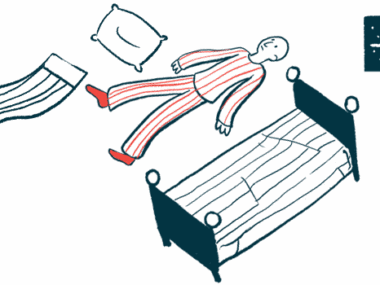Real-world benefits seen with hydroxyurea for sickle cell children
Long-term treatment reduces emergency visits, hospital days: Study
Written by |

Long-term treatment with hydroxyurea reduces emergency department visits and days spent in the hospital for children with sickle cell anemia, the most common and usually the most severe form of sickle cell disease (SCD), a real-world study has found.
Consistent benefits among pediatric patients given the approved medication were seen for up to 12 years, according to the researchers.
“This is one of the first large, real-world, long-term studies to assess the efficacy of hydroxyurea outside of a controlled setting,” Paul George, MD, a pediatric hematology and oncology fellow and PhD candidate at Emory University School of Medicine in Georgia and one of the study authors, said in a news story from the American Society of Hematology.
The study examined clinical and laboratory outcomes of more than 2,000 children with sickle cell anemia followed at a care center in Atlanta from 2010 through 2021. More than half of the children were prescribed hydroxyurea.
“Our results reinforce that hydroxyurea, the most efficacious medicine available for SCD, continues to have really important benefits over time for pediatric patients,” George said.
The study, “Evaluating the Long-Term Benefits of Hydroxyurea in Pediatric Sickle Cell Anemia,” was published in Blood Advances, the journal of the American Society of Hematology.
Investigating hydroxyurea use over time for sickle cell disease
Sickle cell disease, or SCD for short, comprises several disorders caused by abnormalities in the way the body produces hemoglobin, a protein that allows red blood cells to carry oxygen through the body. Sickle cell anemia is a severe type of SCD in which both copies of a gene that helps produce a component of hemoglobin are mutated. It leads to low red blood cell counts, known as anemia, pain episodes known as vaso-occlusive crises, and other symptoms and complications.
Hydroxyurea (sold as Siklos and Xromi) is an oral medication that’s approved to reduce the frequency of pain crises and the need for blood transfusions in people with sickle cell anemia, including children. Current guidelines recommend hydroxyurea be offered to infants with sickle cell anemia starting as soon as nine months after birth.
While some data have shown the therapy is effective over the long term in children, no published studies have examined how its effects vary over time, according to the researchers.
“Hydroxyurea has been a mainstay in SCD treatment for a long time, but was initially used as a chemotherapy, so there have always been some lingering fears about its safety and efficacy, especially for children,” said Wilbur Lam, MD, PhD, a pediatric hematologist at Children’s Healthcare of Atlanta and study author.
To address these gaps in knowledge, the researchers conducted a real-world study using data from the Children’s Healthcare of Atlanta SCD registry, which the team estimates has information on about 95% of children with sickle cell anemia in the city.
The team identified a total of 2,147 children younger than age 18 with sickle cell anemia who had not received a stem cell transplant, gene therapy, chronic transfusion therapy, or any disease-modifying therapy for SCD, apart from hydroxyurea. Within this group, 58% had used hydroxyurea for an average period of 5.1 years.
‘Sustained impact’ seen in treated vs. untreated patients with prolonged use
On average, these children visited the emergency department 1.1 times each year and were hospitalized for 3.5 days. Hydroxyurea use led to 0.36 fewer visits to the emergency department and to 0.84 fewer days spent in the hospital each year compared with children not on hydroxyurea treatment, the data showed. Further, these effects were sustained over time, according to the team.
“We found that hydroxyurea use had sustained impact on [emergency department] visits and hospital days across prolonged use,” the researchers wrote.
Hydroxyurea tended to increase the concentration of hemoglobin in the blood in the first years of treatment. However, this effect waned over time, except in a subset of patients whose lab tests indicated they were consistently taking the medication as prescribed.
“These findings suggest that adherence counseling among patients should remain ongoing, even years into taking the medication,” the team wrote.
This study can provide some reassurance to patients and their families that this therapy, one of the most accessible for SCD, continues to be a safe option with a true benefit outside of a controlled setting.
Several limitations to the study were acknowledged by the researchers, including that these data were collected at a single institution. The team also noted their reliance on emergency department visits and hospitalizations as outcome measures, and a disregard for factors that might bias the results, such as the use of intermittent transfusions or acute events causing ongoing anemia.
But the researchers noted that they tried to balance that by “using contemporary quasi-experimental methods with real-world data.”
“Despite the inherent challenges and imperfect data capture typical of observational studies, our methodological framework successfully identified clinically and statistically significant effects of hydroxyurea over time using utilization and observational measures,” the team wrote.
The scientists also noted the inclusion of patient-reported outcomes and quality of life measures in patient electronic medical records would increase the robustness of future real-world studies.
According to Lam, “this study can provide some reassurance to patients and their families that this therapy, one of the most accessible for SCD, continues to be a safe option with a true benefit outside of a controlled setting.”







